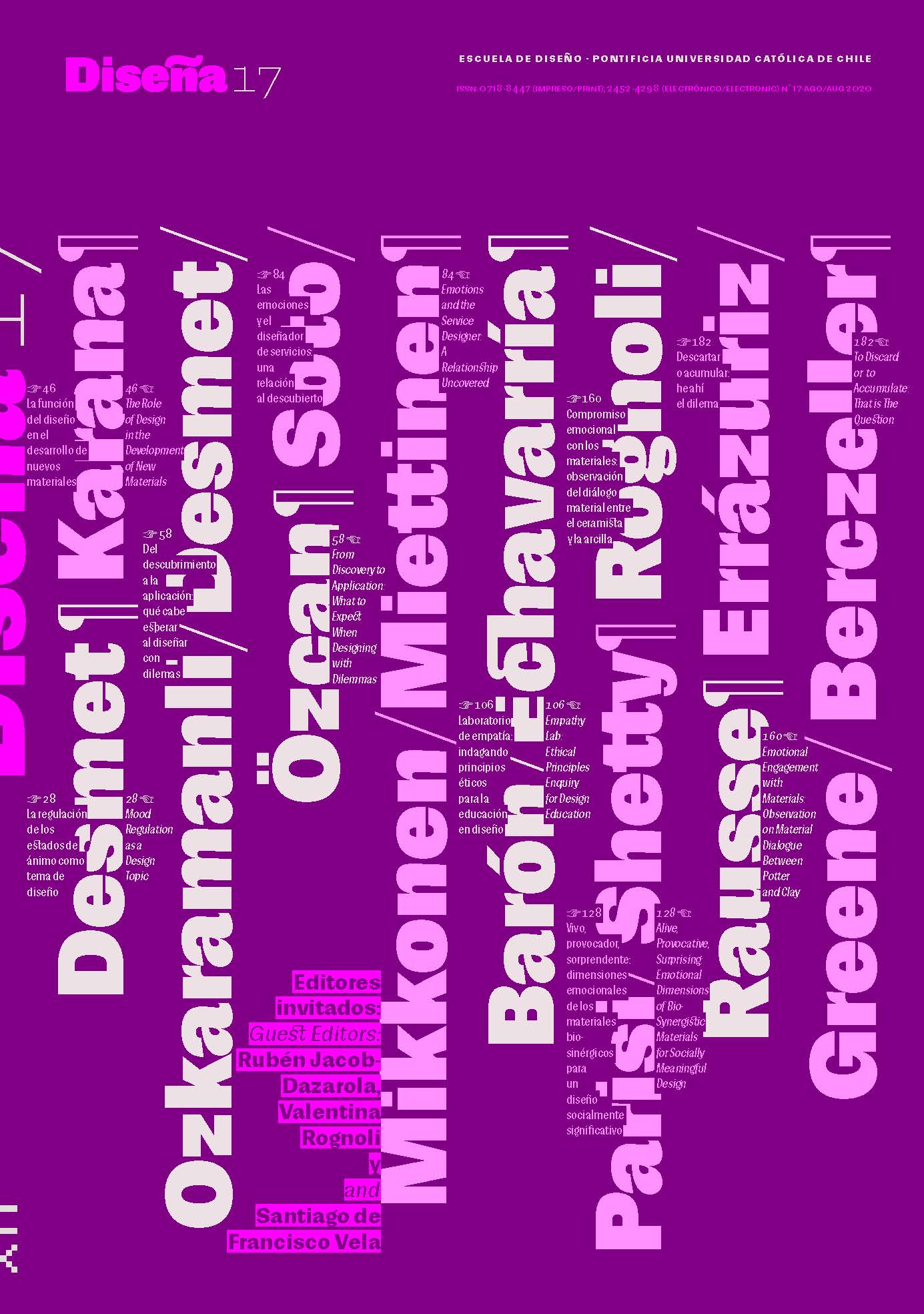Affective-Driven Design: Emotions, Moods and Experiences as Catalysts for Socially Meaningful Design
Main Article Content
Abstract
Affective-driven design, where form and function meet people, their emotions and perceptions, their material experiences and their contexts, can take advantage of these moments to reflect and critically question their scope and possibilities in the long and medium-term, in order to define new, broad, and diverse paths that contribute to avoid losing contact with these proposed solutions to the most urgent needs, often seemingly opposed to more speculative or experimental spaces, but which at the same time can be nourished by knowledge generated in these spaces, perhaps closer to the academy and the emotional perspective of design.
Downloads
Article Details

This work is licensed under a Creative Commons Attribution-ShareAlike 4.0 International license.
COPYRIGHT NOTICE
All contents of this electronic edition are distributed under the Creative Commons license of "Attribution-ShareAlike 4.0 Internacional" (CC-BY-SA). Any total or partial reproduction of the material must mention its origin.
The rights of the published images belong to their authors, who grant to Diseña the license for its use. The management of the permits and the authorization of the publication of the images (or of any material) that contains copyright and its consequent rights of reproduction in this publication is the sole responsibility of the authors of the articles.
References
DESMET, P. M. A. (2018). Positive Design: Delft Students Design for Our Well-being. Delft University of Technology.
DESMET, P. M. A., & POHLMEYER, A. E. (2013). Positive Design: An Introduction to Design for Subjective Well-Being. International Journal of Design, 7(3), 5–19.
GRUDIN, J. (1990). Interface. Proceedings of the 1990 ACM Conference on Computer-Supported Cooperative Work, 269–278. https://doi.org/10.1145/99332.99360
JIMÉNEZ, S., POHLMEYER, A. E., & DESMET, P. M. A. (2015). Positive Design Reference Guide. Delft University of Technology.
NORMAN, D. A. (2004). Emotional Design: Why We Love (or Hate) Everyday Things. Basic Books.
ORTEGA Y GASSET, J. (2000). Meditación de la técnica y otros ensayos sobre ciencia y filosofía. Alianza.
ORTIZ NICOLÁS, J. C., & AU RISICCHIO, M. (2011). The Scenario of User Experience. In S. J. Culley, B. J. Hicks, T. C. McAloone, T. J. Howard, & P. Badke-Schaub (Eds.), DS 68-7: Proceedings of the 18th International Conference on Engineering Design (ICED 11), Impacting Society through Engineering Design: Vol. 7 (pp. 182–193). https://www.designsociety.org/publication/30674/THE+SCENARIO+OF+USER+EXPERIENCE
REDSTRÖM, J. (2006). Towards User Design? On the Shift from Object to User as the Subject of Design. Design Studies, 27(2), 123–139. https://doi.org/10.1016/j.destud.2005.06.001
REDSTRÖM, J. (2008). RE:Definitions of Use. Design Studies, 29(4), 410–423. https://doi.org/10.1016/j.destud.2008.05.001

